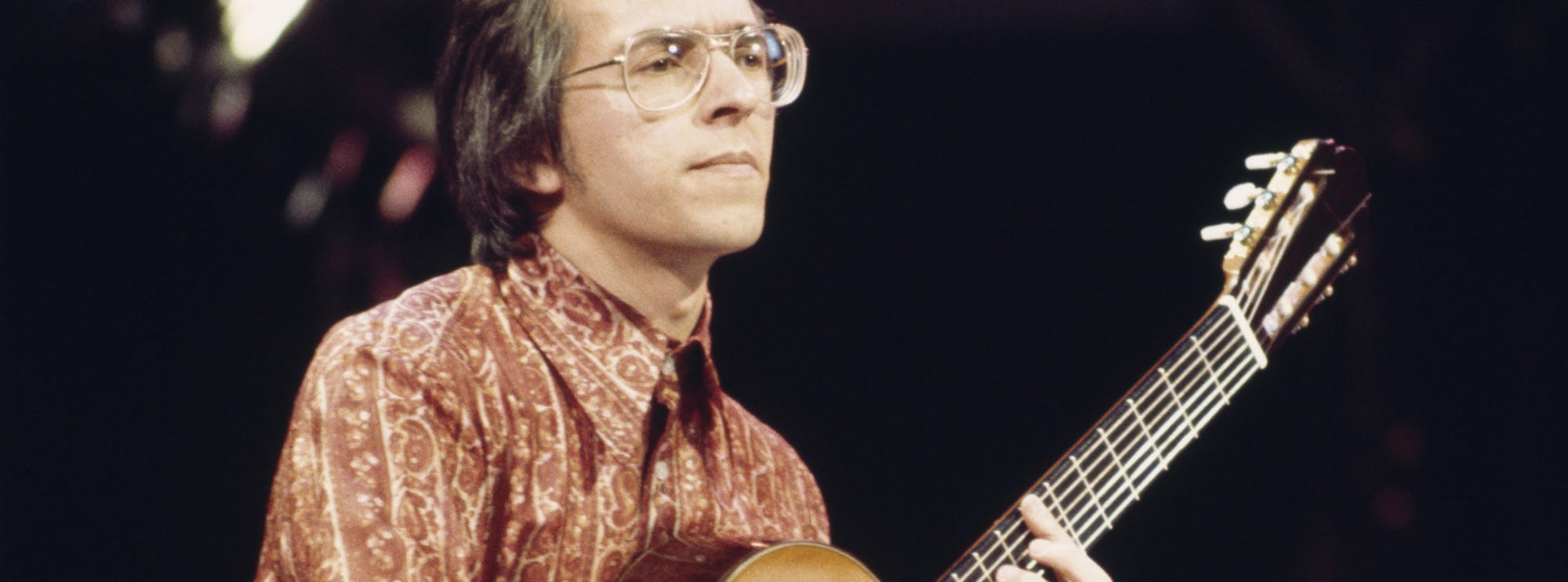AC/DC Back In Black: A guitarists guide
Guitar lessons by Danny Gill
"Back in Black" is the seventh studio album by Australian rock band AC/DC, released on July 25, 1980. The album is a tribute to their former lead singer, Bon Scott, who passed away earlier that year. It is also the first album featuring Brian Johnson on vocals. The album was a massive success, selling over 50 million copies worldwide, making it one of the best-selling albums of all time. In this analysis, we will focus on the guitar work, specifically Angus Young's contributions, and how guitarists can appreciate and learn from this seminal record.
In this course, LickLibrary veteran, Danny Gill walks you through the many highlights of each song from the heavy metal icons one phrase at a time, including all of Angus Young’s legendary guitar parts from the tracks; “Hells Bells,” “You Shook Me All Night Long,” and the iconic, “Back in Black.”
Song-by-Song Analysis
1. Hells Bells
The album opener, "Hells Bells," starts with the iconic tolling of a bell, followed by a clean, arpeggiated A minor chord. Angus' lead guitar uses the A minor pentatonic scale throughout the song, with a tasteful mix of bluesy bends, legato, and vibrato. The main riff is based on the A power chord, and the guitar solo showcases Angus' mastery of the pentatonic scale and his ability to create memorable melodies.
2. Shoot to Thrill
"Shoot to Thrill" is an up-tempo rocker with a driving rhythm. The main riff is centred around the E power chord and employs syncopated rhythms, while the verse chords consist of D, A, and G power chords. The chorus features a catchy melody played in octaves, while the solo employs the E minor pentatonic scale, with a mix of string bending and alternate picking.
3. What Do You Do for Money Honey
This track showcases a catchy riff built around the E power chord, with a touch of chromaticism and open-string riffs. The verse chords are G, A, and E power chords, and the chorus is built on a D to A chord progression. The solo is played using the E minor pentatonic scale and features a mix of alternate picking and legato techniques.
4. Given the Dog a Bone
"Given the Dog a Bone" is a bluesy rocker in the key of A. The main riff is based on the A power chord, with bluesy bends and chromatic passing tones. The verse chords consist of A, D, and E power chords, and the chorus features a D to A chord progression. The solo employs the A minor pentatonic scale, with an emphasis on string bending and vibrato.
5. Let Me Put My Love into You
This track is a mid-tempo rocker in the key of B. The main riff features a B power chord, with a combination of palm-muted galloping rhythms and open-string riffs. The verse chords consist of E and F# power chords, and the chorus features a D to A progression. The solo is played using the B minor pentatonic scale, with a mix of alternate picking and legato techniques.
6. Back in Black
"Back in Black" is the album's title track and one of AC/DC's most famous songs. The iconic main riff is centred around the E power chord, with a touch of chromaticism and open-string riffs. The verse chords are built on G, D, and A power chords, and the chorus is centred around the E power chord. The solo employs the E minor pentatonic scale and showcases Angus' signature techniques, such as string bending, vibrato, and alternate picking.
7. You Shook Me All Night Long
One of AC/DC's biggest hits, "You Shook Me All Night Long" is a catchy, up-tempo rocker in the key of G. The main riff features a G power chord, with a combination of syncopated rhythms and open-string riffs. The verse chords consist of C, G, and D power chords, while the chorus is built on a G, C, and D progression. The solo employs the G major pentatonic scale, showcasing Angus' ability to create melodic solos with a mix of string bending, alternate picking, and vibrato.
8. Have a Drink on Me
"Have a Drink on Me" is a bluesy track in the key of A. The main riff is centred around the A power chord, with bluesy bends and chromatic passing tones. The verse chords consist of A, D, and E power chords, and the chorus features a D to A chord progression. The solo employs the A minor pentatonic scale, with an emphasis on string bending, vibrato, and alternate picking.
9. Shake a Leg
"Shake a Leg" is an up-tempo rocker with a driving rhythm. The main riff is based on the A power chord, with syncopated rhythms and open-string riffs. The verse chords consist of D, A, and G power chords, and the chorus is built on a G to A progression. The solo is played using the A minor pentatonic scale and features a mix of alternate picking, legato, and string bending techniques.
10. Rock and Roll Ain't Noise Pollution
The album closer, "Rock and Roll Ain't Noise Pollution," is a mid-tempo anthem in the key of G. The main riff is centred around the G power chord, with a touch of chromaticism and open-string riffs. The verse chords are built on C, G, and D power chords, and the chorus features a G to D progression. The solo employs the G minor pentatonic scale, with a mix of string bending, vibrato, and alternate picking.
Angus Young and His Contribution to "Back in Black"
Angus Young is the lead guitarist and co-founder of AC/DC. His playing on "Back in Black" is a masterclass in rock guitar, showcasing his signature techniques and melodic sensibilities. Throughout the album, Angus employs the minor pentatonic scale to create memorable solos and riffs that have become synonymous with the AC/DC sound. His playing is characterized by aggressive string bending, tasteful vibrato, and precise alternate picking, all of which contribute to the timeless appeal of "Back in Black."
In conclusion, "Back in Black" by AC/DC is a masterful album that showcases the guitar prowess of Angus Young. The song-by-song analysis provides insight into the various guitar techniques and scales used throughout the record, making it a valuable resource for guitarists looking to learn and appreciate this iconic album. The list of guitar techniques serves as a starting point for further exploration, allowing players to dive deeper into the unique style and sound of AC/DC.
Guitar Techniques Used in "Back in Black"
Here is a list of guitar techniques used by Angus Young throughout the album "Back in Black." These techniques can be further explored using the provided links:
- Vibrato
- Alternate picking
- Legato
- String bending
- Power chords
- Palm muting
- Syncopated rhythms
- Open-string riffs
- Chromaticism
- Bluesy bends
- Hammer-ons
- Pull-offs
- Slides
By studying these techniques and applying them to your own playing, you can gain a deeper understanding of Angus Young's guitar work on "Back in Black" and enhance your own skills as a guitarist.

About The Tutor
Tutor Profile
Danny Gill
Danny Gill is, without a doubt, the most loved tutor by our community. With an incredible array of DVDs and web lessons for LickLibrary covering a wide variety of topics all of which he covers with incredible detail, it's no wonder he carries as much respect as he does. As...




